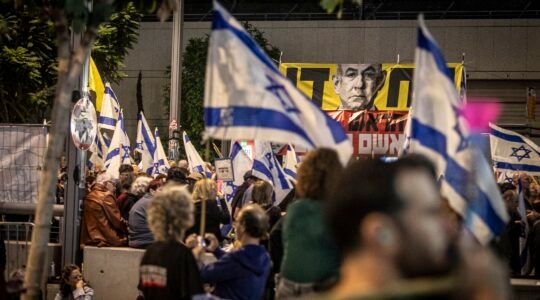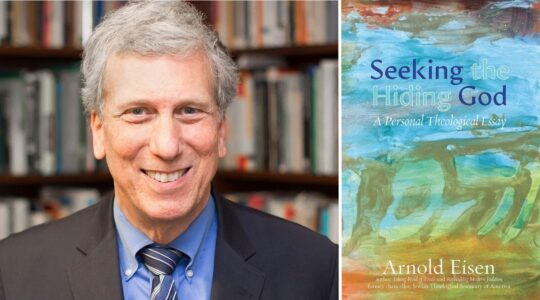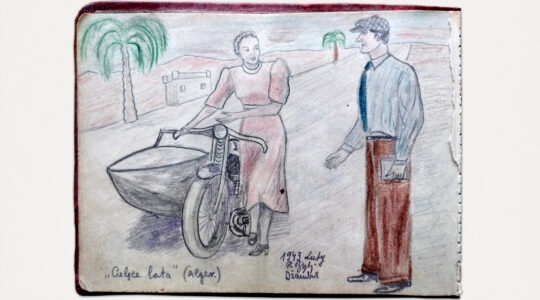Two very different landmark events in black-Jewish relations took place in 1991, one tragic and one thrilling. Twenty years later, the repercussions are still being felt.
On Aug. 19, 1991, a car accident in the Crown Heights section of Brooklyn launched a perfect storm of violence, transforming a longstanding resentment among some blacks of Jews in general and neighborhood chasidim in particular into three days of rage and riots that some historians have called the worst case of anti-Semitism in American history.
The memory of the accidental death of 7-year-old Gavin Cato, son of Guyanese immigrants, who was struck by a car driven by a young Lubavitcher chasid, and the subsequent mob-driven fatal stabbing of Yankel Rosenbaum, a 29-year-old Lubavitcher chasid from Australia who was in the wrong place at the wrong time, is still sharp and shocking two decades later.
(Our series of reports this week explores the impact of the tragedy.)
Perhaps most galling is the attempt by some in the media and city government at the time to equate the two deaths in some way and to describe the riots as a clash between neighborhood Jews and blacks rather than a 20th-century American pogrom. It was initiated by calls among angry black teens after the car accident — “Let’s go to Kingston Avenue and get a Jew” — and later stirred by outside activists, resulting in marches and rallies with banners and calls for “death to the Jews.”
Worst of all was the violence, which was extensive and frightening. Jews, and their homes and businesses, were attacked, with angry crowds seeking out mezuzahs on neighborhood doorposts in a reversal of the biblical Exodus story, where the sign of a Jewish household meant protection.
In the aftermath, city politics took a sharp turn to the right, with Rudy Giuliani defeating incumbent David Dinkins, the city’s first black mayor, in 1993. The Republican victory was seen as due in large part to the way the Crown Heights riots were dealt with, or not dealt with, by City Hall and the NYPD. (Dinkins is the last Democrat to have been elected mayor of New York.)
The lengthy legal battle over the fate of the youth charged with the Rosenbaum stabbing further alienated the Jewish community and others when a largely African American jury found Lemrick Nelson Jr., the 16-year-old defendant, innocent of murder in 1992, despite strong evidence of his guilt, including being identified by a dying Rosenbaum as his assailant.
Nelson was later convicted of violating Rosenbaum’s civil rights, served a 10-year jail sentence, and in 2003 admitted and apologized for his role in the fatal stabbing.
The only positive result from all this human tragedy was that relations between blacks and Jews in the neighborhood have improved, thanks in part to the formation of what came to be known as the Crown Heights Coalition, a group headed by black and Jewish communal leaders, which aired and dealt with social issues.
The neighborhood is quieter now, with residents aware of the dangers of unbridled resentments and the need to preserve communal tolerance, if not open harmony.
Far from the streets of New York, in the spring of 1991, the government of Israel undertook a dramatic, secret rescue of endangered Ethiopian Jews, bringing more than 14,000 “home” in just 36 hours of non-stop airlifts in late May.
Support the New York Jewish Week
Our nonprofit newsroom depends on readers like you. Make a donation now to support independent Jewish journalism in New York.
The world was mesmerized by footage of black Jews, seemingly from a past century, stepping off the giant airplanes in flowing robes and being embraced by enthusiastic Israelis.
Makeshift donation centers were soon overflowing with clothes and household goods for the newcomers, as Israelis took pride in the dramatic, color-blind welcome of their African brethren. The powerful message was that religious and historical bonds trump racism, and that a Jew is a Jew, whatever the color of his or her skin.
Inevitably, though, euphoria gave way to reality, and the absorption of Ethiopian Jewry into Israeli society has been especially difficult.
The tight-knit community not only had to adjust to a new country, language and customs, but to a modern, largely urban society after centuries of tribal life. Further, there were ongoing questions about the authenticity of the new immigrants’ Jewish heritage. And racial bias was never far from the surface.
Even today, Ethiopian Jews lag far behind other segments of Israeli society in terms of educational achievements, but, unfortunately, lead in terms of poverty, unemployment and juvenile delinquency. (See the Aug. 15 issue of The Jerusalem Report for a series of thoughtful articles on their progress and setbacks, 20 years after Operation Solomon.)
There have been a number of noteworthy individuals from the Ethiopian community who have overcome a variety of societal challenges and taken on leadership positions in Israel. No doubt they serve as role models for many, and their achievements underscore the Zionist belief that Jews from anywhere in the world can lead free and fruitful lives in the Jewish state, with the understanding that full absorption is a process, and perhaps an ideal. Progress has been made, but at a painfully slow rate.
If there are parallel lessons to be learned from the Crown Heights riots and the rescue of and efforts to absorb Ethiopian Jews in Israel it is that dramatic events capture the imagination but give way to the daily grind of incremental adjustments and accommodation. Sharing space with “the other,” whether it’s Jews and blacks in crowded Crown Heights or Ethiopian Jews in Israeli society, calls for understanding and acceptance — qualities far easier to identify than to attain.
E-mail: Gary@jewishweek.org
The New York Jewish Week brings you the stories behind the headlines, keeping you connected to Jewish life in New York. Help sustain the reporting you trust by donating today.





